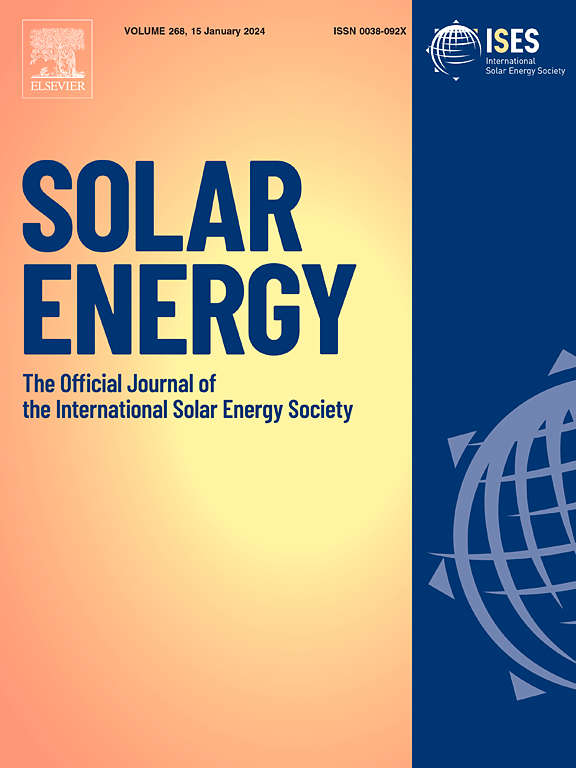Daylighting efficacy: A new metric for solar radiation utilization and daylighting design
IF 6
2区 工程技术
Q2 ENERGY & FUELS
引用次数: 0
Abstract
Appropriate daylighting design can create a comfortable indoor lighting environment, however, the objectives of providing adequate daylight and controlling solar gain often conflict. Existing daylighting metrics effectively evaluate the daylighting performance of buildings, but no connection has been established between daylighting and the solar gain it brings. To address this issue, this paper proposes a new metric, daylighting efficacy (DE), which is defined as the ratio of the luminous flux obtained through daylighting on the whole horizontal work plane to the solar radiation received by the daylighting system (lm/W). The calculation equation for DE is established accordingly, and its application is explored in a reference office using the parametric design approach. Variations of the reference room’s orientation, glazing property and configuration, and window-to-wall ratio are then examined to assess their impact on DE with explanations provided for the underlying causes. Additionally, three innovative daylighting systems are evaluated using DE to demonstrate its suitability for assessing buildings with various daylighting systems. Finally, a comparison between DE and Daylight Factor (DF) is presented to highlight that DF cannot serve as a substitute for DE. The reasonable range for DE will require determination through the combined efforts of future researchers.
采光效率:太阳辐射利用和采光设计的新指标
适当的采光设计可以创造一个舒适的室内照明环境,然而,提供充足的日光和控制太阳能增益的目标经常发生冲突。现有的采光指标有效地评估了建筑物的采光性能,但没有建立采光与其带来的太阳能增益之间的联系。为了解决这一问题,本文提出了一个新的度量指标——采光效率(DE),其定义为在整个水平工作平面上通过采光获得的光通量与采光系统接收的太阳辐射的比值(lm/W)。在此基础上,建立了DE的计算公式,并探讨了参数化设计方法在某参照厅的应用。然后检查参考室的朝向、玻璃特性和配置以及窗墙比的变化,以评估它们对DE的影响,并提供潜在原因的解释。此外,使用DE对三种创新的采光系统进行了评估,以证明其适用于评估具有各种采光系统的建筑物。最后,比较了DE和日光因子(DF),强调DF不能代替DE。DE的合理范围需要未来研究人员的共同努力来确定。
本文章由计算机程序翻译,如有差异,请以英文原文为准。
求助全文
约1分钟内获得全文
求助全文
来源期刊

Solar Energy
工程技术-能源与燃料
CiteScore
13.90
自引率
9.00%
发文量
0
审稿时长
47 days
期刊介绍:
Solar Energy welcomes manuscripts presenting information not previously published in journals on any aspect of solar energy research, development, application, measurement or policy. The term "solar energy" in this context includes the indirect uses such as wind energy and biomass
 求助内容:
求助内容: 应助结果提醒方式:
应助结果提醒方式:


